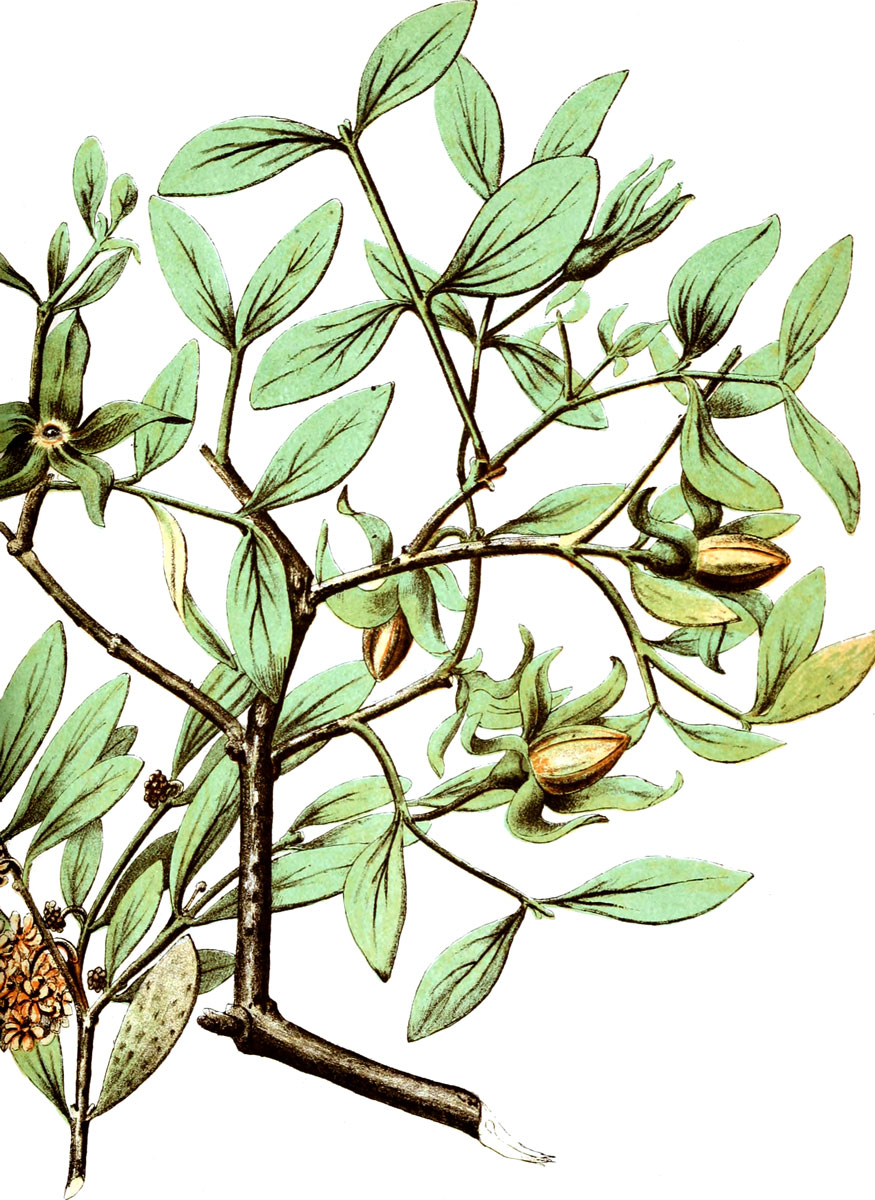Jojoba

Origin: South-western United States
Family: Simmondsiaceae
Scientific name: Simmondsia chinensis
Folk Names: Coffee bush, deer nut, goat nut, pig nut, wild hazel
Magical
Element: Water
Day: Thursday
Planet: Jupiter
Zodiac: Sagittarius
Deities: Adonis
Parts used: Seed (wax/oil)
Magical Properties: Beauty, healing, comfort, longevity
Aromatherapy
Part Used: Bean
Extraction Method: Expeller-pressed
Flash Point: >500°C
Perfume Use: Base ‘oil’ (liquid wax)
Shelf Life: Indefinite
Scent Description: Softly nutty, slightly sweet
Active Constituents: High in vitamin E, and B complexes
Topical Use
Skin Types: All
Absorption Rate: Fast
Viscosity: Medium
Properties: A great choice for improving the overall function of the skin, boosting its immunity, and balancing its pH; antibacterial; emollient; wound healing; antioxidant; balancing, softening; soothing to irritations.
Notes: High in wax esters (sterols) which have a similar structure to the sterol content in our own skin. As such, jojoba oil is extremely well absorbed.
Practical
Jojoba is grown for its wax/oil, however it can only be produced on a limited scale, and thus is primarily only used for personal care products.
Indigenous Uses:
- Native Americans made a salve for the skin/hair by heating the seeds to soften them and then crushing with a mortar and pestle;
- The O’odham people of the Sonoran Desert used an antioxidant jojoba salve to treat burns;
- Jojoba salve was also used to soften and preserve animal hides;
- Pregnant women ate the seeds, believing them to assist with childbirth;
- Some groups' hunters ate jojoba on the trail to keep hunger at bay, however the Seri (of Sonora, Mexico) only regarded it as an emergency food option
Botanical
Type: Shrub
Plant size: 1-2m
Leaves: Thick, waxy, green-grey oval leaves, 2-4cm long and 1.5-3cm wide
Flowers: Early Spring: small, greenish-yellow flowers, with 5-6 sepals and no petals
Fruit: Acorn-shaped capsule 1-2cm long
Etymology: The common name “jojoba” originated from O’odham name Hohowi.
In the Garden
Type: Evergreen shrub
Light: Bright light
Water: Keep mostly dry
Soil: Sandy, well-drained soil
Tips:
- Male and female plants are required in order to produce fruits
